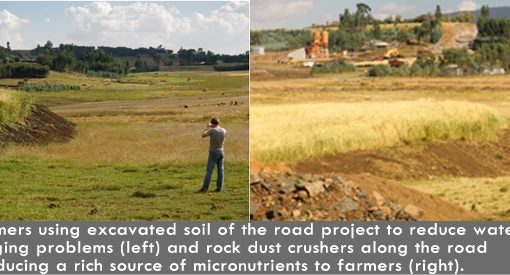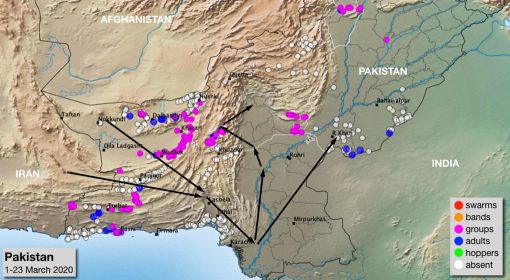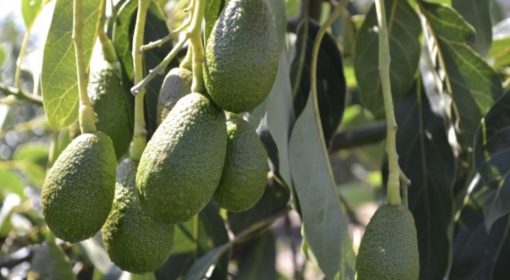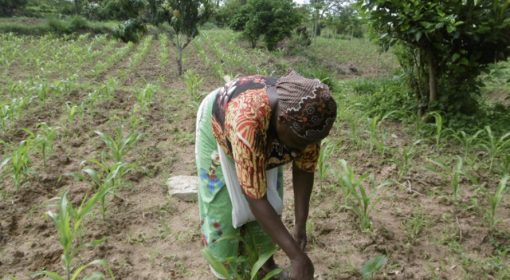Posted by Ruben Borge
June 02, 2014
In Rema village in Ethiopia, Abere has tried to cultivate faba beans using biofertilizers.
Abere, 70, leases about 0,5 hectares of clay farm land at an slope in her remote. For many years, she has had to walks bare feet everyday, to check on her crops and do the weeding manually. She never applied any chemical fertilizer as it was too expensive for her. Over the years, her land lost its fertility.
Abere was witness to an experiment demonstrating organic fertilizers in Rema. She wanted to try them at her farm.
Abere owned 2 cows, 2 cebus and 2 oxen that provide for and power to plough the land. Her family used to dry some of the dung and sell it as kitchen fuel and would dispose the rest. (This is common practice in Ethiopia). As part of adopting organic fertilizers, she started using the dung to produce ferments to improve the farm land (she could now grow faba beans and barley) and to use in her kitchen garden that produced pepper, garlic and potatoes.
Experience with Faba bean
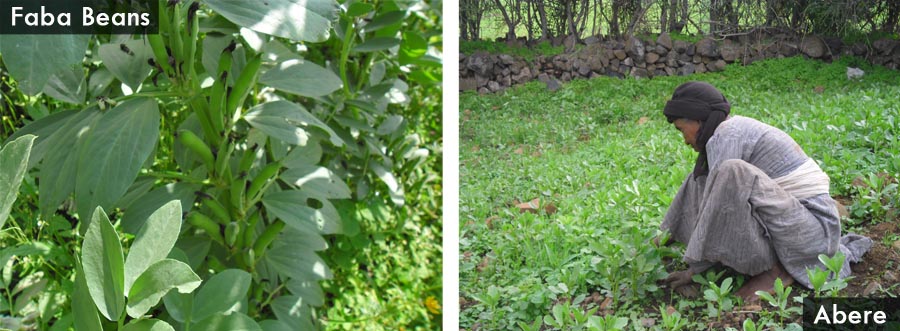
So Abere now grows barley and faba bean. Over a 400 m2 patch of her land she grew barley, applying 1.5 tonnes of Bocashi (a natural fertilizer made of microbial cultures) per hectare. Over another 800 m2 patch of faba bean, she made three applications of liquid bio-fertilizer at various stages of the crop: seedling, flowering and fruiting. This made for a total of 10 litres of liquid fertilizer produced at home spread over three applications.
Abebe talks about the crop development ever since with much enthusiasm. Her son takes pictures that illustrate her story. The faba beans have grown well and vigorously. A self-made potash fertilizer has supported the flowering and the fruiting. Abere is especially impressed by the number of pods per plant—she used to be happy with 1 or 2 pods per flowering bud, she now gets up to 6. This means that each plant gives 80-90 pods. Without any fertilization, she could harvest 100-200 kg of faba beans over 800 m2 (2.5 ton/ hectare). With fertilizers she made herself, she got 500 kg (6.2 ton/hectare). This was beyond her expectations and made harvesting a celebration.
The low cost of this fertilizer was down to its preparation, as all the ingredients are available locally at the village. She produces all she need with no investment and has not needed any financial support. In terms of time, this costed her 3 days of extra work in the season.
More and more farmers are interested in such fertilizers; they want to learn how to produce them and try them out at their farms.
{jcomments on}
